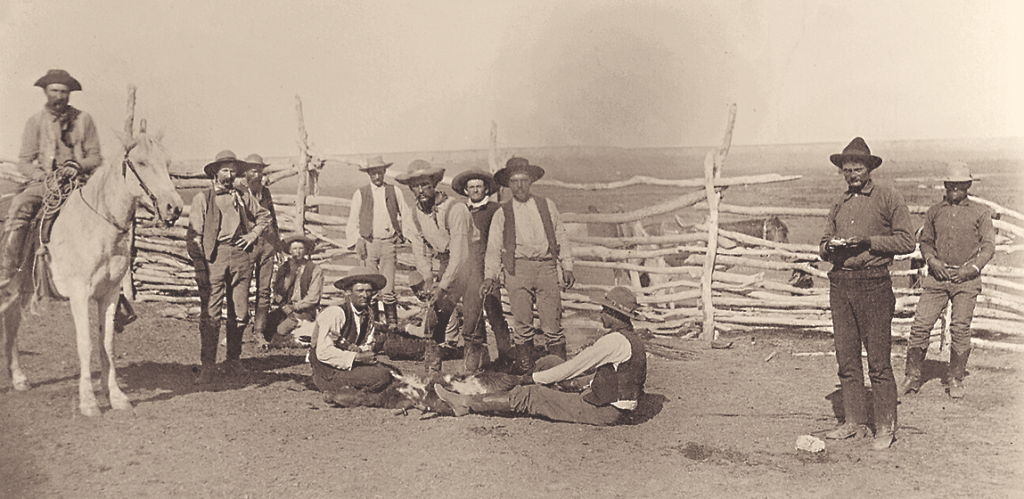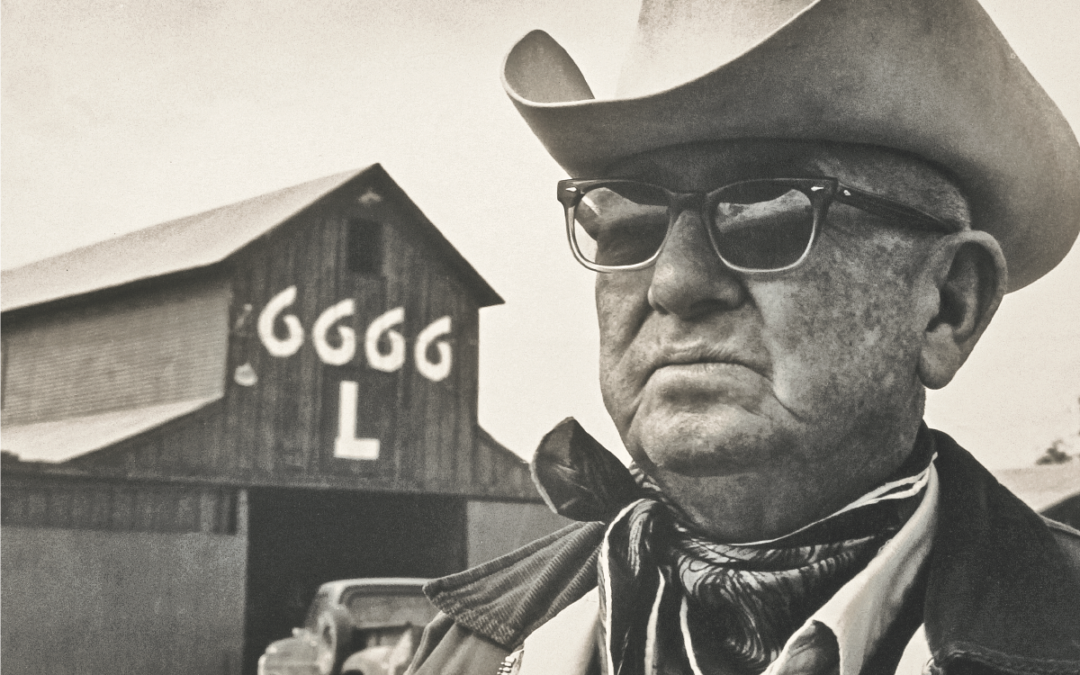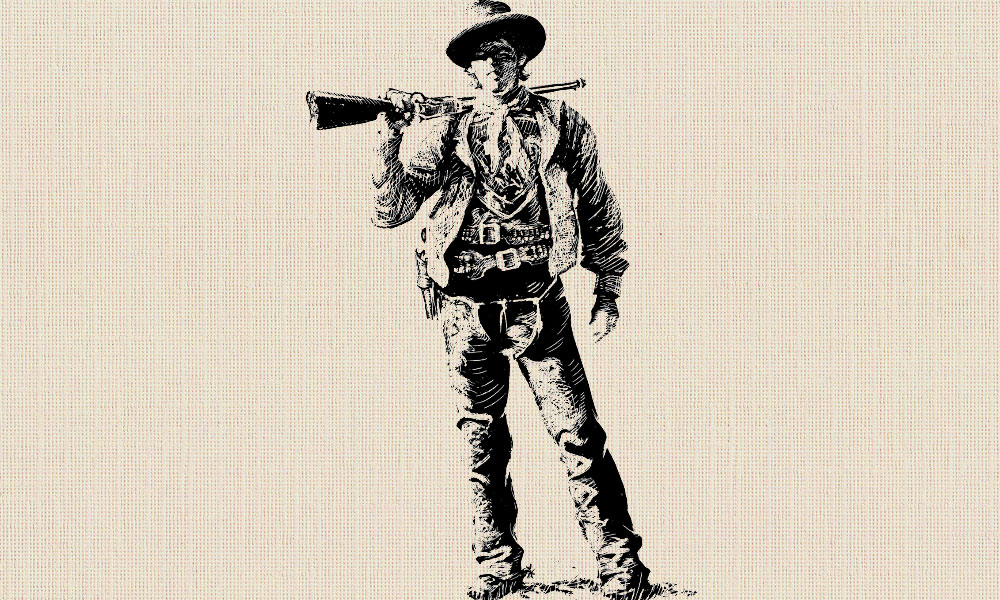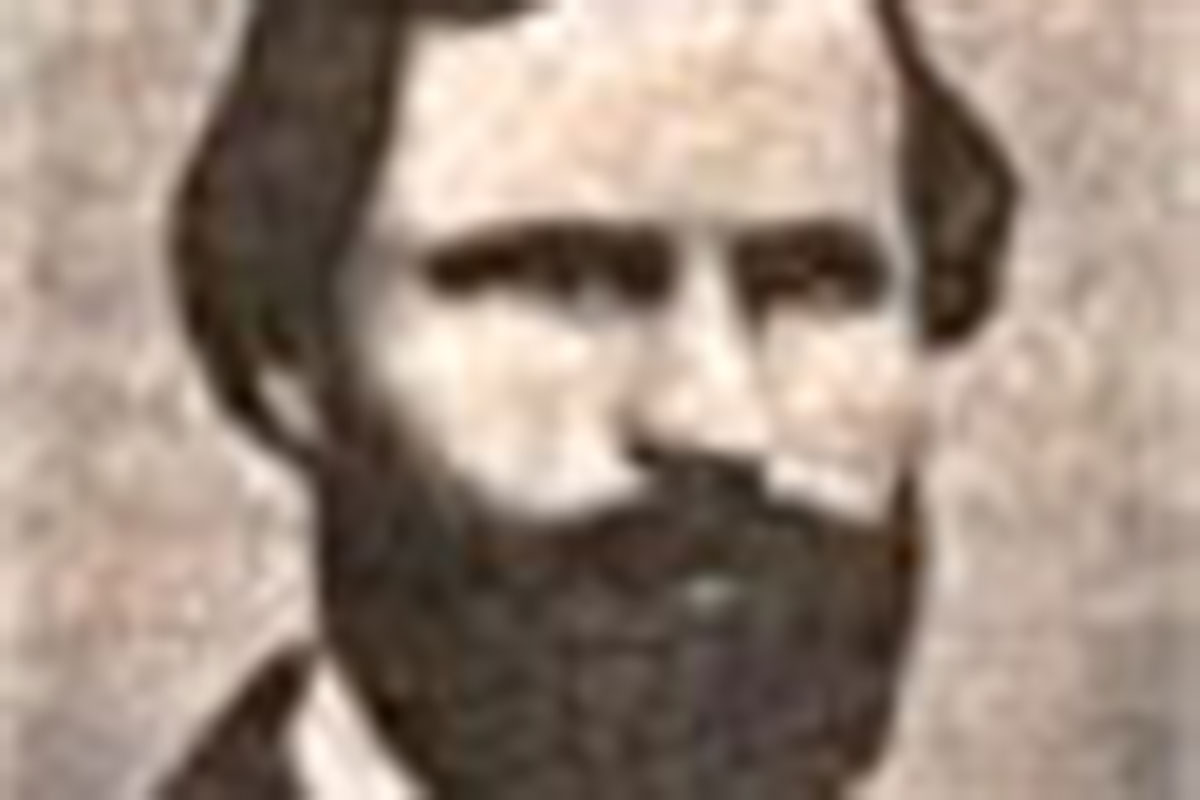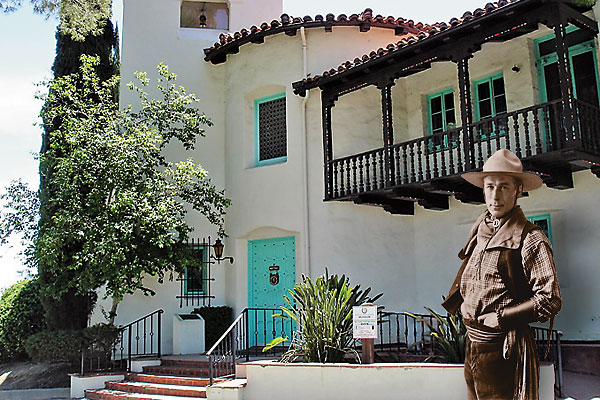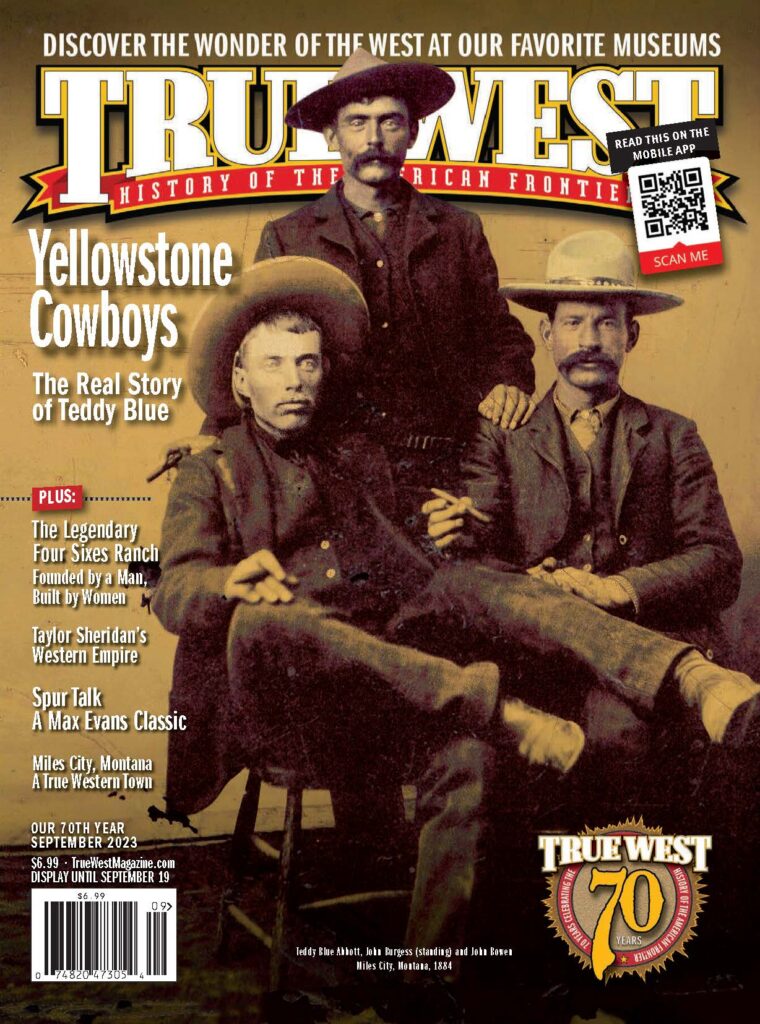The ranch was founded 155 years ago by men and women who are as mythical as they are real.
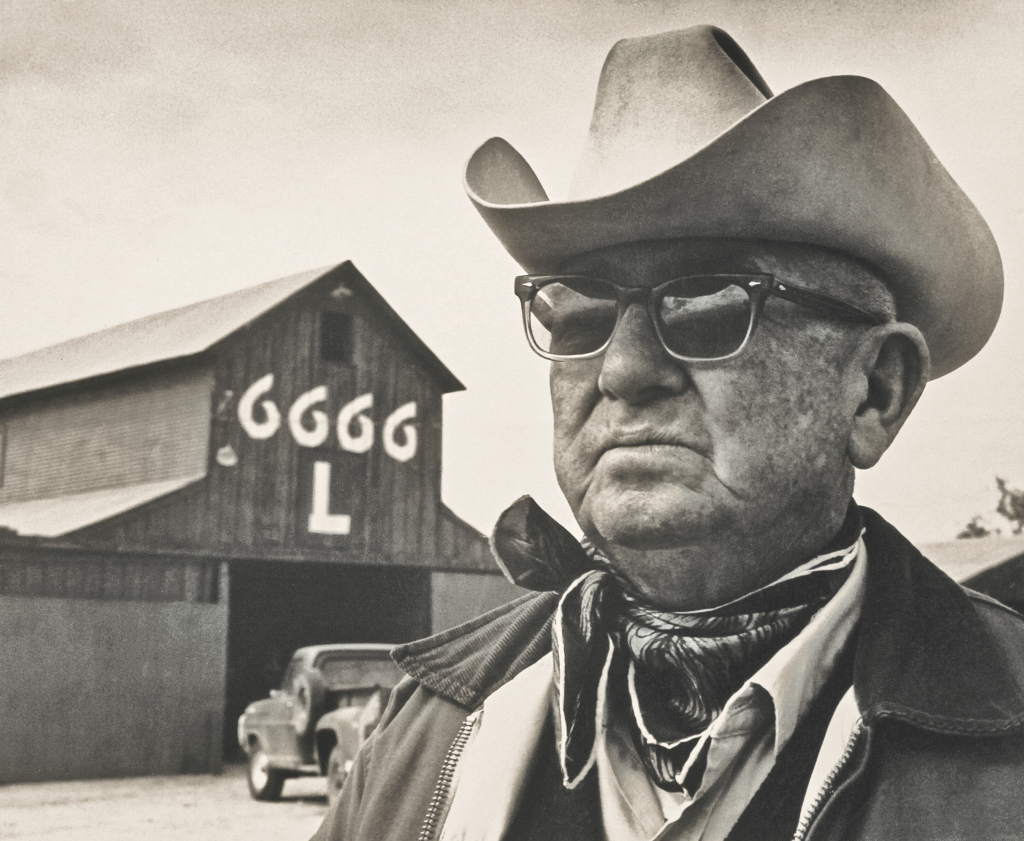
Ranching has always been something of a gamble, so it makes sense that Captain Samuel “Burk” Burnett won one of Texas’s famous ranches in a poker game. Of course, when you’re holding four sixes, that’s a pretty safe bet.
Makes sense, sure. It just didn’t happen that way.
“The poker hand story is a good one,” says Henry Chappell, author of 6666: Portrait of a Texas Ranch, “but like so many great stories, it isn’t true.”
The truth isn’t quite as exciting. When Burnett bought 100 head at Denton Creek in 1868, the cattle already wore the 6666 brand. The bill of sale transferred the cattle and the brand to Burnett.
But the ranch (roughly 266,255 acres today with headquarters in Guthrie) and Burnett have remarkable stories—and the 6666 keeps making history.
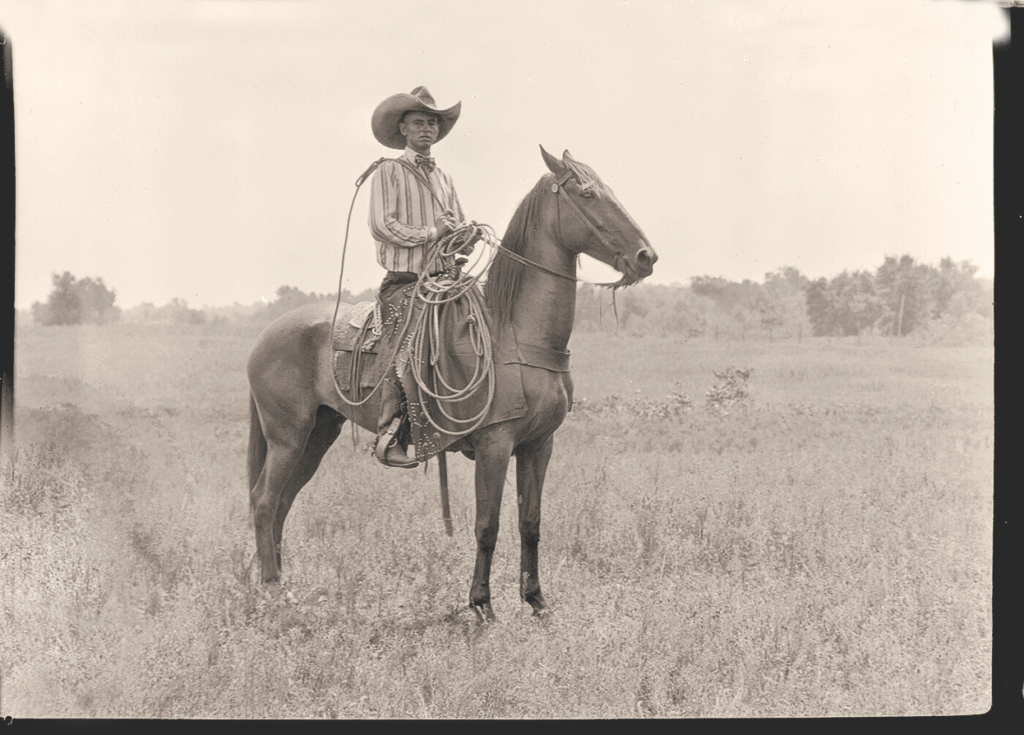
Erwin E. Smith, circa 1905-1910, Courtesy Amon Carter Art Museum
In December 2020, the 6666, aka The Sixes, went up for sale with a $320 million price tag. Last year, filmmaker and native Texan Taylor Sheridan—whose ranching expertise comes primarily as creator of Yellowstone and its Paramount Network spinoffs—headlined an investment group that bought that ranch. Though the sales price was not disclosed, the Fort Worth-Star Telegram reported it at $192.2 million. Asked about the price, Sam Middleton, owner of Chas. S. Middleton and Son LLC, which represented the 6666 in the real-estate deal, says with a laugh: “Can’t tell you.”
The 6666 has 119 pastures, 18 solar wells, 29 windmills, a top-line quarter-horse program and all those cattle (Angus, these days), spread out among three divisions that include the Guthrie headquarters and the Dixon Creek Ranch near Panhandle, Texas.
“This was a turnkey operation that included half of the minerals, all of the cows, all of the horses…all of the ranch equipment, the rolling stock, the tractors, the trucks, trailers, the furniture in the big house, the art,” Middleton says.
There was another key to the sale, though.
“Everybody,” Middleton says, “wants to own a piece of history.”
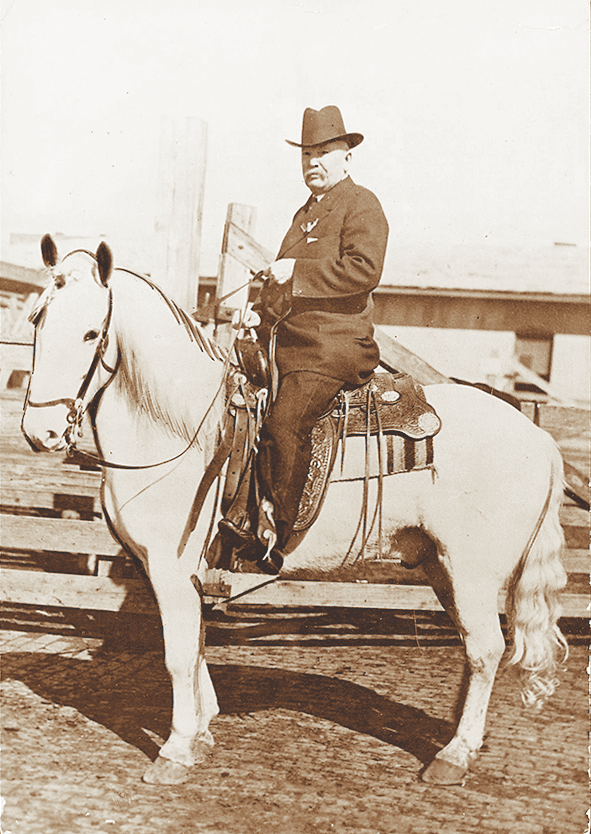
That History Begins…
Born in Missouri on January 1, 1849, Burk Burnett grew up as a farmer until a late 1850s drought sent the family to Denton County, Texas, where Burnett’s dad switched to cattle ranching. At age 19, Burk bought those 6666 cattle from Frank Crowley. A year later, he married the daughter of Fort Worth’s First National Bank’s founder, and son Tom was born in 1871. After the couple divorced in 1892, Burk married Mary Couts, another banker’s daughter, but after their son died in 1916, Burk had his wife declared insane and confined to a private home.
Burk was better with cattle, having escaped the Panic of 1873 by holding a herd driven to Wichita, Kansas, over the winter, then selling the beef the following year for a $10,000 profit.
He was, Chappell says, “the right man at the right time. I can’t imagine that anything like The Sixes could be put together today. He had the acumen and resources to weather the horrific droughts and market fluctuations of the 1880s and ’90s by negotiating grazing leases on Comanche land.”
Those negotiations led to a long friendship with Comanche leader Quanah Parker, who taught Burk the Comanche language. The Comanches called him “Big Boss.” Burnett also hobnobbed with Theodore Roosevelt.
Burk wasn’t just a cattleman. In February 1889, the Fort Worth Daily Gazette reported that the cattle baron “brought from his ranch what he asserts is the largest thing in the way of a hog that this state has ever produced”—weighing more than 800 pounds. The hog was auctioned off in Wichita Falls for $50.
In 1900, Burk bought the 8 Ranch from the Louisville Land and Cattle Company near Guthrie (named after W.H. Guthrie, a major shareholder of the company). Three years later, the Dixon Creek Ranch—named after buffalo hunter Billy Dixon—near Borger in the Texas Panhandle was added to the holdings. In 1910, Burk bought the Triangle Ranch, 26,000 acres in Iowa Park. In 1917, he splurged on a “modern” home at the Guthrie ranch…“built of the beautiful red sandstone with architectural trimmings of white Texas rock,” the Star-Telegram reported in 1921, “…larger than the most elaborate Fort Worth home, one room measuring 30×40 feet. The interior is a constant reminder of pioneer days,” but with electric lights and modern furnishings so that it “completely lost any vestige of the crude primitive cowboy architecture.”
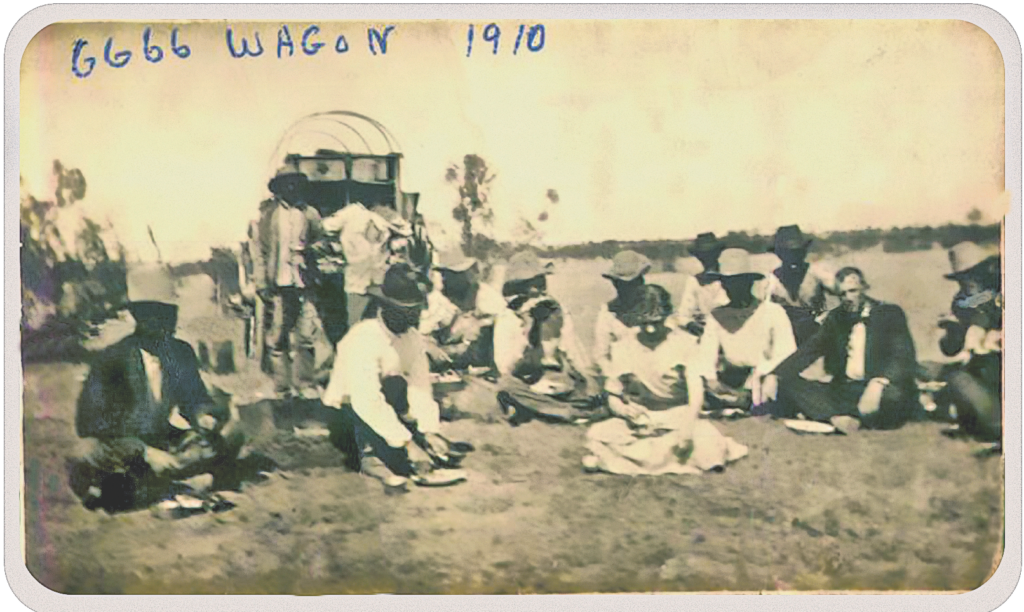
On the Frontier
The Sixes’ headquarters might have been modern, but King County remained frontier.
A lack of “conveniences” was mentioned in 1934 by the Associated Press.
“Today, there is not a single mile of railroad in the country. There is no practicing physician, attorney or dentist, no resident minister, bank, undertaker, hotel or organized corporation.
“When a resident of King County falls ill, medical attention can be had only by going to Lubbock—more than 100 miles away—or to Knox City, Benjamin or Paducah. Sometimes a doctor is called to make the long trek from one of those points into the county. The same problem comes up when a dentist, attorney or undertaker is needed.
“Banking is carried on with institutions in Benjamin or Paducah, mainly. Some take their financial matters to Spur. There never has been a bank in Guthrie.”
That hasn’t changed. Closest bank: Paducah, roughly 28 miles north. No true gas station, “but the Four Sixes Supply Store does have a pump,” says JoAnn Shipman, librarian at the Guthrie CSD & King County Library.
Restaurant? Nope. “We used to have the Rock Café, which was attached to the gas station, Graves’s Texaco, I believe,” Shipman says. “We do have a coffeeshop, so you know where our priorities are.”
King County’s seat is designated as an unincorporated community. Shipman estimates Guthrie’s population at “50 or less.” But people live here, Shipman says, because “it’s a sweet little place.” The county’s population is an estimated 259. Of Texas’s 254 counties, only Loving, population 100 give or take a couple, is smaller.
Tom’s Path
Burk Burnett died in 1922, a year after oil was discovered on the Dixon Creek property (47 years before oil was discovered on the Guthrie ranch). The Fort Worth Star-Telegram called the estate “probably the largest ever to enter Tarrant County courts,” reporting the property’s value at no less than $6 million and with a “maximum value” of $15 million.
The will provided son Tom $25,000 a year. (Burk’s widow got nothing, but she sued, received $3 million and willed it to Texas Christian University.) Tom and his father “had a very difficult relationship,” Chappell says. Most of the estate went into a trusteeship for granddaughter Anne Burnett. Burk did bequeath $50,000 “for the beautification” of Burk Burnett Park, which he had established in Fort Worth in 1917.
Tom Burnett likely had a closer relationship with his grandfather, banker Martin B. Loyd, who died in 1912 and left his grandson with cash and one-fourth of his properties in Wichita County (land that would also have oil underneath). Two trustees were appointed to manage the estate’s holdings, according to the will, but Tom had learned the cattle business as a line rider and later wagon boss. He married Olive “Ollie” Lake, who gave birth to daughter Anne in 1900 before the couple divorced. By now, you might notice a pattern of a lack of wedded bliss in this family.
Says Chappell: “Burk was a businessman; Tom was a rancher and a much better horseman.”
Tom was also driven to out-earn his father. He didn’t get there, but he bought more ranch properties, took an interest in banking and proved successful in many ventures, except when it came to marriages; none of his five attempts lasted. He sponsored rodeos, bred horses, befriended Will Rogers and was host to Theodore Roosevelt on wolf hunts. He grew fat and died of a heart attack in 1938.
Kingdom of Horses
While Tom Burnett sought to increase his fortunes, 6666 foreman George Humphreys “set out to improve the ranch’s run-of-the-mill remuda,” Chappell says. But Tom Burnett helped that cause, too, by gifting Humphreys a stallion named Scooter. “Another of his studs, Grey Badger II, bred Sixes mares and set the ranch’s horse program on the course that led to further improvements under foreman J.J. Gibson and finally to Doc Blodgett’s innovations. So, in that regard, Tom made important early contributions to The Sixes’ remuda.”
Today, that quarter-horse program continues to thrive. “The annual Return to the Remuda sale, held with Pitchfork, Tongue River and Beggs ranches,” Chappell says, “may well be the most prestigious sale of the year.”
The Two Annes
Tom Burnett’s only daughter, Anne, inherited her father’s eye for good horses and good cattle. She helped found the American Quarter Horse Association and became the first woman honorary vice president of the Texas and Southwestern Cattle Raisers Association. After her death in 1980, she was inducted into the American Quarter Horse Hall of Fame (which she also helped establish). Following the Burnett trend, her first two marriages ended in divorce, though No. 2, to stockbroker James Goodwin Hall, produced one daughter, “Little Anne” (later Anne Marion). Husband No. 3 died in 1964. Husband No. 4 was Charles D. Tandy of the Tandy Corporation.
“I see Anne Tandy’s period as one of continuity and stewardship,” Chappell says. “Upon inheriting the entire Burnett empire upon her mother’s death, Anne Marion’s tremendous resources and intense devotion raised every aspect of The Sixes—genetics, infrastructure, management—to levels that set the standard in the ranching industry. The Sixes was her passion to the end of her life.”
Anne Marion—four marriages, three divorces—assumed leadership of The Sixes in 1980. Trustees had managed the 6666 since Burk Burnett’s death. She was more than just a ranch leader during her 40-year run as ranch owner. She donated $57 million in 2013 to a Fort Worth emergency center. Her $10 million gift from the Burnett Foundation helped found the Georgia O’Keeffe Museum in Santa Fe, New Mexico. But you can do those kinds of things when your net worth is $1.1 billion (according to Forbes in 2009).
Marion was inducted into the National Cowgirl Hall of Fame in 2005. She died of lung cancer on February 12, 2020, at age 81, and her will specified that her ranches would be sold—Guthrie’s 142,000-plus acres, Dixon Creek’s 114,000-plus and the 9,200-plus at Frisco Creek in Sherman County.
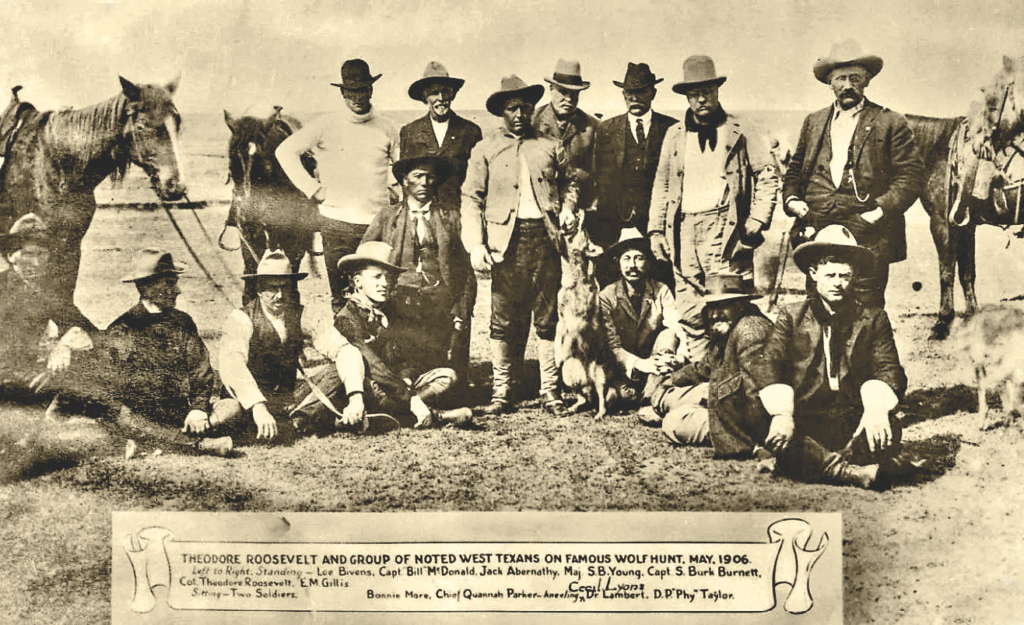
Selling History
Middleton had become friends with Marion after handling several real-estate deals for her. But the Middleton name was pretty big in West Texas, too.
The fourth-generation company traces its roots to Charles Middleton, son of a Louisiana sugarcane farmer who struck out west at age 17 to enter the cattle business. He rode into Lubbock in 1898. “When the cattle business dried up, he was hearing about ranches for sale and he started selling some ranches [around 1920],” Sam Middleton says.
The firm, specializing in farm and ranch sales and appraisals, has sold several historic properties, including Texas’s Matador, Palo Duro (once part of Charles Goodnight’s JA ranch) and Waggoner ranches. “Ninety percent of my business is selling these worn-out ranches,” Middleton says, “but every now and then I get to sell a glamorous one.”
This is how The Sixes sale came about:
“Four, five years before [Anne Marion] died,” Middleton says, “she said, ‘Sam, when I pass away, all the ranches are going to be sold, and you’ll be getting a call.… I said, ‘Anne, what about Windi [Marion’s daughter, Anne “Windi” Phillips Grimes]’? And she looked at me—and she could look at you all over—and she said, ‘Sam, why would I want to burden her with that obligation?’”
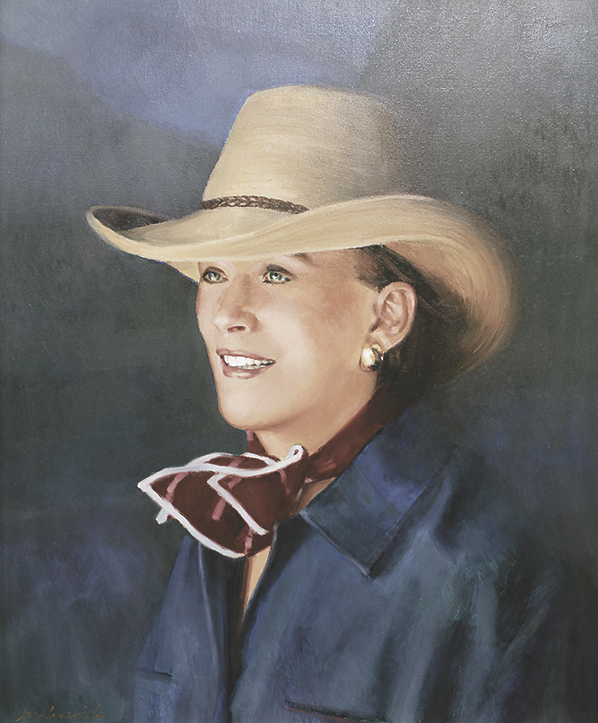
Daughter of Anne Burnett and James Goodwin Hall. Courtesy National Ranching Heritage Center
The New Era
That obligation belongs to Taylor Sheridan, who isn’t the first Hollywood celebrity with a 6666 connection. In 1975’s Macintosh and T.J., Roy Rogers’s last movie, he played a veteran working cowboy who takes a job at The Sixes. The movie was filmed on location at the ranch and in King County.
It’s Rogers’s best acting performance.
A historic ranch and Roy Rogers? Sheridan is stepping into some mighty big boots.
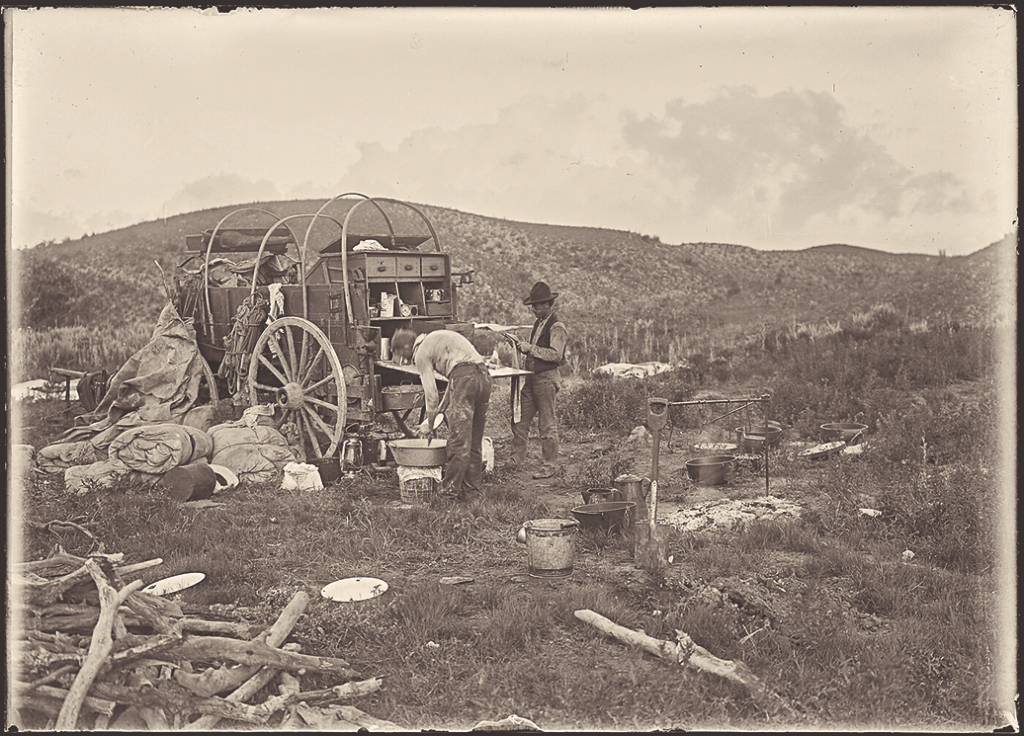
The Giant Legacy of the Four Sixes Historic Ranching Neighbors
The 6666 has tons of history and stories, but so do many other Texas Panhandle ranches. We asked Natalie Bright for her take on some of those spreads. Bright isn’t just a Texas writer/blogger. Parts of the ranch she runs once were “under the Turkey Track,” she says, “and we now share a fence line with The Sixes.”
JA
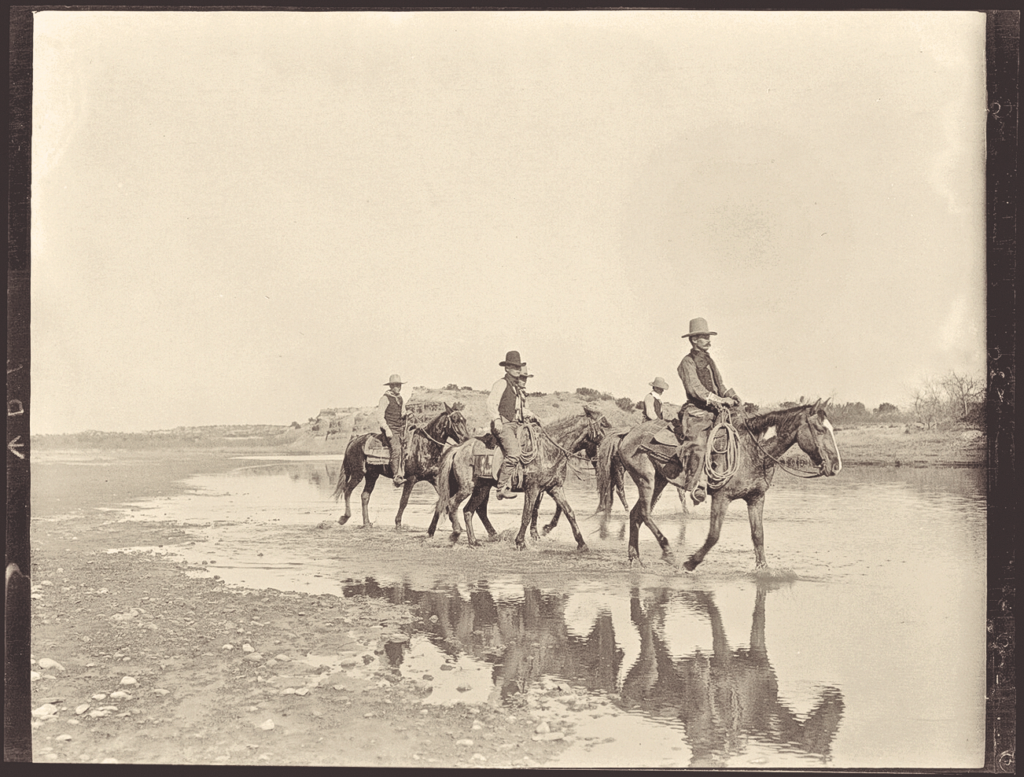
“Charles Goodnight agreed to vacate the lush Canadian River valley and in return the pastores agreed to avoid the Palo Duro. In fall of 1876, Goodnight drove the buffalo out of Palo Duro Canyon to make room for his cattle. Taking on Scottish partner John Adair, the JA Ranch grew to 335,000 acres covering four counties. Goodnight experimented with buffalo-cattle mixed breeds.”
Turkey Track
“J.M. Coburn was a Kansas City bank employee who returned to Scotland, raised money and formed The Hansford Cattle Company. Retaining the unique brand of a previous landowner, he began buying up neighboring ranches and hired a general manager. The GM was killed by lightning, the cowboys rebelled and Coburn hightailed it back to Kansas, none the wiser on how to manage a cattle operation.”
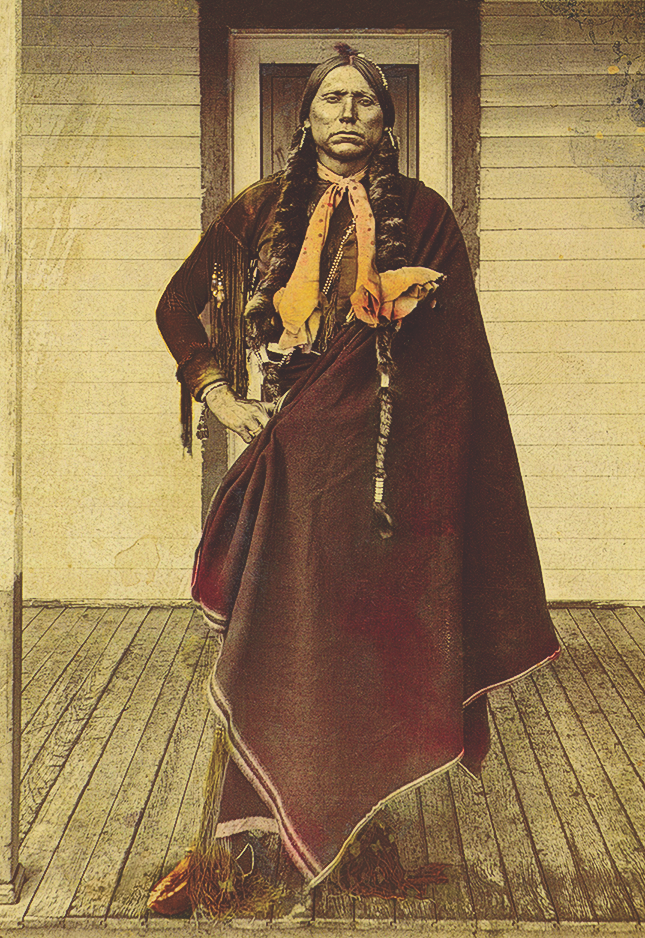
Waggoner
“The largest ranch in the U.S. under one fence included more than a million acres and spanned six counties, growing to 60,000 head. Dan Waggoner even struck a deal with Comanche Chief Quanah Parker for grassland and helped fund the building of the Star House on West Cache Creek for Quanah’s wives. Dividing the holdings between three children, Dan took it all back in 1923 to form a trust where the heirs were board members with no authority. Litigation among the family extended for 25 years until its sale in 2016.”
XIT
“The XIT was established through a trade of 3 million acres of public land for funds to build a state capitol. This deal shifted pastures grazed by New Mexico sheepherders to cattlemen. The first to issue 23 written rules for its cowboys, and it held the last recorded trail drive in 1897 from the Texas Panhandle to Montana. Trail driver Ab Blocker is the man credited with designing the XIT brand as a deterrent for rustlers.”
